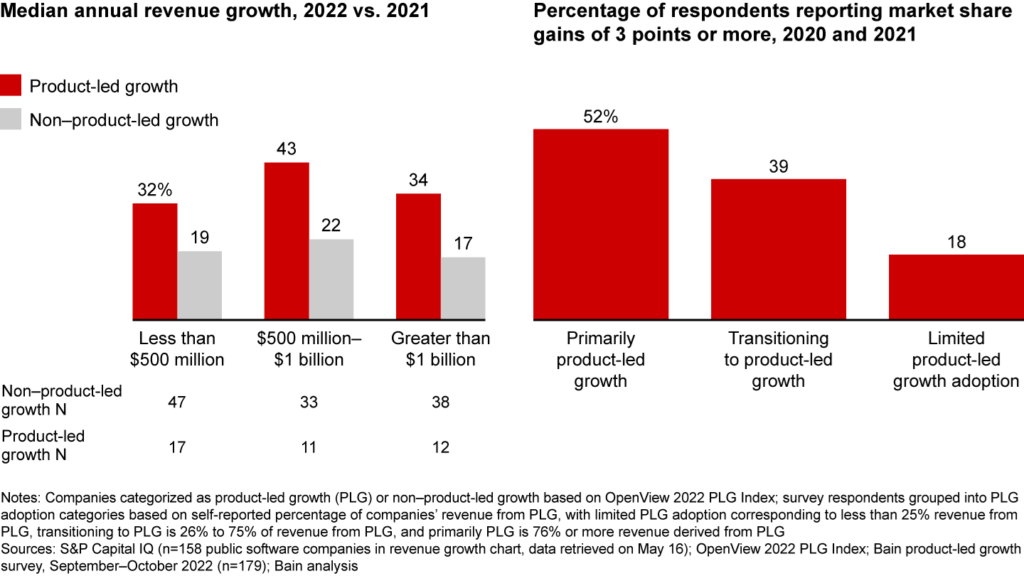
Despite the recent reset of technology sector valuations, product-led growth (PLG) software companies continue to outperform.
PLG has caught fire in software markets. It focuses on enabling end users to discover, try, buy, and scale up their usage in a self-service manner. Many companies adopt a PLG strategy from day one and add traditional sales-led commercial motions over time. Meanwhile, sales-led software companies can add a PLG motion or take a hybrid approach by applying the PLG model or capabilities to select parts of their product and customer portfolios—for example, relying on a sales team for the initial sale, then shifting to PLG self-service for renewals or expansions.
PLG works best in markets where product configuration and deployment time are usually quick; end users can make purchasing decisions; the product is sticky, with usage growing over time; the potential customer base is broad, with lots of free users who can convert to paid users; and the product has features that entice users to upgrade to the next, higher-priced tier.
But in markets suited to PLG, what’s surprising is how many companies continue to struggle with the key to unlocking its full potential: enterprise sales.
Breaking through the ceiling
It may seem counterintuitive to integrate a live person into a business model tied to self-service. Nevertheless, getting end users to discover, sign up for, and engage with a product on their own can be challenging, especially if the product is complex or all its benefits aren’t obvious.
Plus, once PLG companies reach a critical mass of users, they often hit a revenue ceiling that’s tough to break through. As customer spending on an individual software vendor grows, the extra scrutiny and required budget approval by senior leadership can become roadblocks.
A dedicated sales team can help PLG companies move beyond one-off software purchases within enterprises and land bigger deals across the customer’s organization. Sales, customer success, and support teams can also unlock new avenues of growth for both customers and vendors by helping end users scale up product usage beyond what they could do alone.
Integrating enterprise sales and self-service
Many companies have difficulty seamlessly marrying enterprise sales with a product-led sales motion. The product, customer success, sales, and marketing teams share ownership of the customer journey and touch the same customer experiences, so without well-defined connection points and an operating model that effectively integrates the distinct functions, companies will have trouble maximizing growth. Leading companies focus on three things.
.Defined triggers for a person to engage with a customer
.Clear collaboration strategies
.Appropriate resource allocation
The original content of the note was published on Bain.com. To read the full note visit here